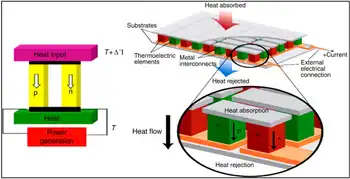The dirty secret about clean coal – it doesn’t exist
By Globe and Mail
Protective Relay Training - Basic
Our customized live online or in‑person group training can be delivered to your staff at your location.

- Live Online
- 12 hours Instructor-led
- Group Training Available
So you can't blame the coal industry for milking Barack Obama's own words as it battles to moderate pending climate change legislation and avoid tougher emission standards.
In one TV spot airing everywhere these days, Mr. Obama touts “clean coal” as the key to millions of jobs and U.S. energy independence.
“This is America. We figured out how to put a man on the moon in 10 years,” Mr. Obama intones in a clip taken from a speech during last fall's election campaign. “You can't tell me we can't figure out how to burn coal that we mine right here in the United States of America and make it work.”
The ad is part of a massive national campaign by the American Coalition for Clean Coal Electricity, made up of coal mining companies, utilities and their suppliers. Last year, the group spent $38-million on communications and another $10-million on Washington lobbying. This year, it's on pace to exceed even those enormous sums.
“Clean coal” is a brilliant marketing slogan.
Unfortunately, it is, at best, a distant dream. At worst, an oxymoron.
True clean coal technology does not yet exist. Touting coal as clean is a bit like pushing potato chips as a diet food, or a couch as an exercise device.
Facing the same U.S. legislative threats, Canada's oil producers might as well rename the oil sands Athabasca Beach to give the admittedly dirty business a green veneer.
The term “clean coal” loosely refers to various efforts to make the world's most polluting form of energy cleaner. Some of these technologies are already in place, such as scrubbing smokestack emissions and washing coal to remove surface impurities. It's also technically feasible to turn coal into a liquid fuel, but the process is extremely expensive and produces about twice as much carbon dioxide – the leading cause of global warming – as petroleum.
But none of these techniques do much to curb CO2 emissions – the acknowledged primary cause of global warming. Burning coal remains the world's No. 1 source of man-made CO2.
The only way to make coal truly clean is to capture the CO2 and bury it deep underground – so-called sequestration.
In spite of considerable talk, there is no commercially viable carbon sequestration in place anywhere in the world. It remains more of a hope than a reality.
The Obama administration's recent budget put aside $3.4-billion for clean coal research and development, and restarted a problem-plagued and badly overbudget experimental CO2-sequestering coal plant in Mr. Obama's home state of Illinois. Montana and Saskatchewan recently announced a similar cross-border project involving an existing Saskatchewan Power coal plant.
The jury is still out on the viability of these projects.
In the meantime, the use of coal continues to grow, in the United States and around the world.
The U.S. generates half of its electricity from coal. And it has vast reserves of it – the equivalent of three times Saudi Arabia's proven oil reserves. Coal's share of world energy, which stands at roughly 25 per cent, is still growing at a rate of one percentage point a year, mainly the result of growing use in China.
Even compared with other fossil fuels, coal produces more CO2 per kilowatts of electricity produced, according to experts.
An interesting question for Canada to consider is the relative contribution to CO2 emissions of oil sands and coal. But comparisons are tricky. Coal is typically used to generate electricity, while oil sands crude is used mainly for gasoline or heating oil.
Environmentalists argue that both fuels are equally bad from a pollution perspective, and need to be cleaned up or limited.
“Tar sands and coal are things that both countries are going to have to deal with,” pointed out Susan Casey-Lefkowitz, a senior attorney with the Natural Resources Defense Council in Washington.
For the time being, the coal industry's objective seems to be to continue to mine and burn as much coal as possible, for as long as possible.
That will bolster U.S. energy independence.
But there's nothing particularly clean about it.











